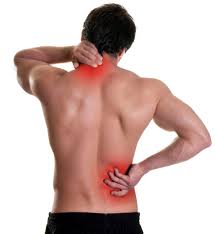Non-Surgical Treatments for Neck Pain
 If soreness in your neck turns into searing pain, or if you’ve suffered a muscle strain or sprain that has your neck in painful knots, you may find yourself looking into treatments to help relieve your pain and to help you return to your daily routine.
If soreness in your neck turns into searing pain, or if you’ve suffered a muscle strain or sprain that has your neck in painful knots, you may find yourself looking into treatments to help relieve your pain and to help you return to your daily routine.
In most cases, injuries respond favorably to non-surgical treatments that bring excellent pain relief. Listed below are some of the typical treatments for neck pain.
When Should I Contact a Doctor for Neck Pain?
It’s always best to first see a board-certified physician who can assess your neck pain and check to make sure that you don’t have any serious underlying condition that would need further workup and possibly more serious medical attention. When your doctor determines that surgery is not necessary, you may be instructed to use one or more of the following non-surgical treatments to ease your neck pain:
- Medication. Your doctor may suggest acetaminophen (e.g. Tylenol,) anti-inflammatories (e.g., aspirin, ibuprofen, naproxen), and perhaps muscle relaxants. Oral steroids might also be prescribed to reduce the painful inflammation.
- Physical therapy. Physical therapy can be very effective in treating neck pain by reducing inflammation along the spine, relaxing muscles, decreasing stiffness, and strengthening neck and back muscles.
- Posture advice. Your doctor can provide advice on improving your posture while sitting, standing, and walking, which can re-align your spine and take pressure off of the nerves and muscles in your neck. An improvement in posture may help to reduce neck tension and pain.
- Massage therapy. A series of massage sessions concentrating on relaxing the muscles in the neck can decrease pain, and helps to relax the body that also lessens tension.
- Cervical traction. Physical therapy sessions might include safe cervical traction treatments to lengthen the neck and reduce pressure on nerves.
Your doctor might also recommend an ergonomically designed chair to use at home and/or work, which can provide neck and back support and may help to relieve pain. Often, simply repositioning and re-aligning your body when sitting can help to reduce neck pain as well.







